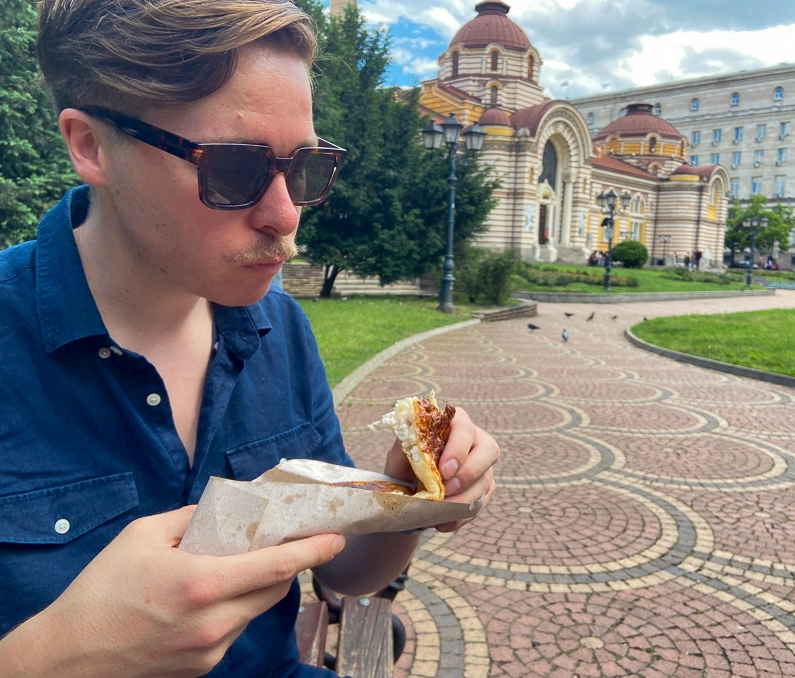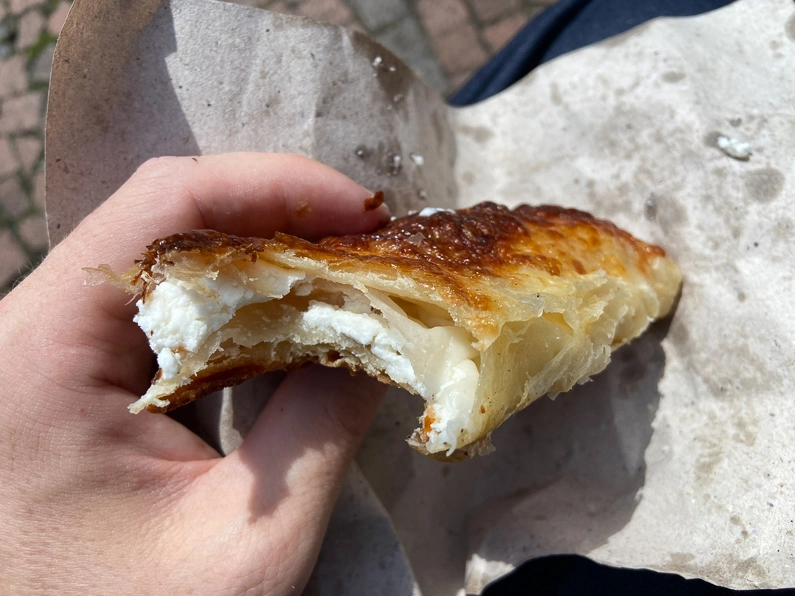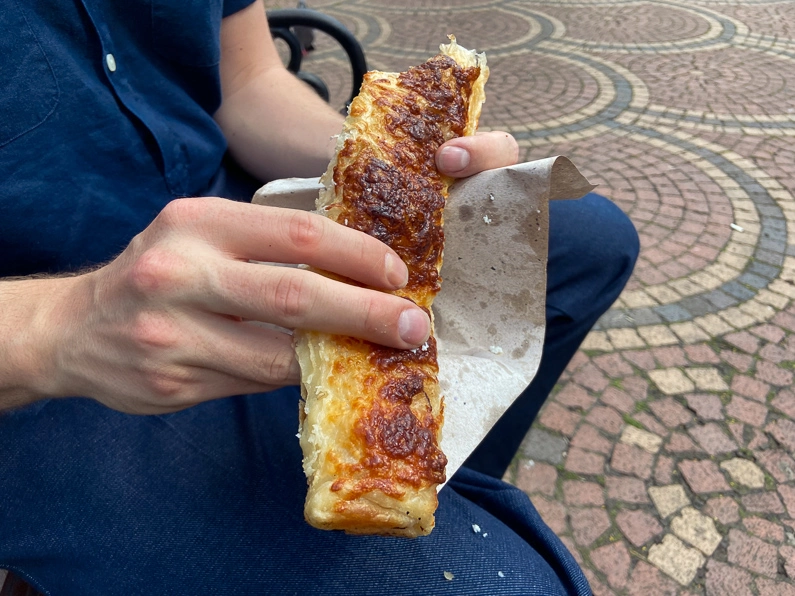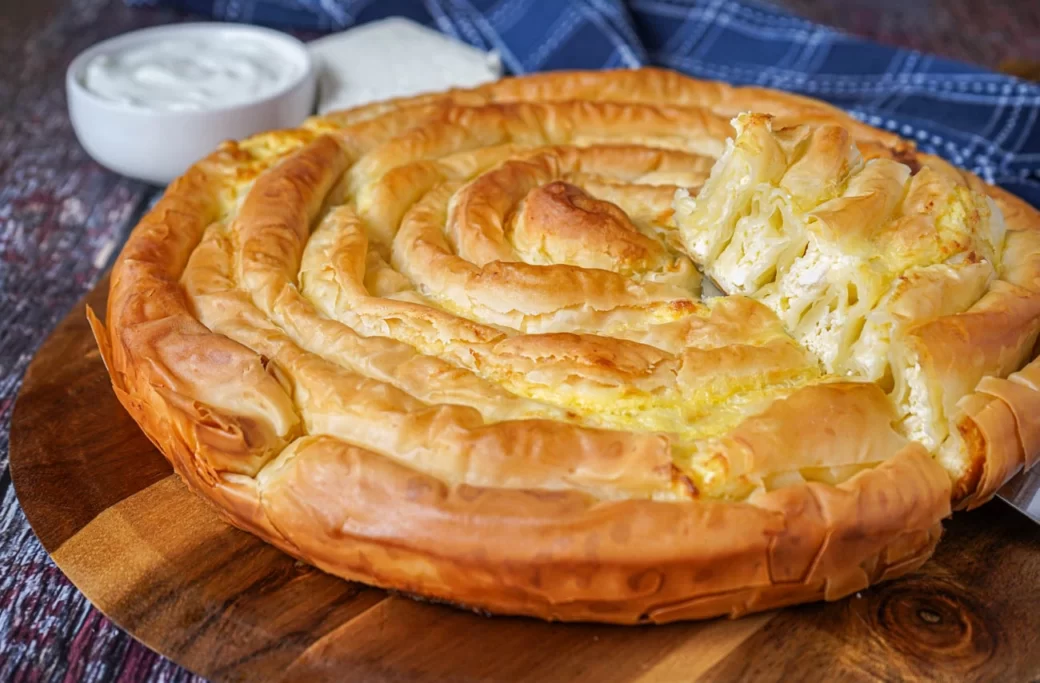In February of this year, Becky and I moved from Malta to Bulgaria. One of the most challenging parts about leaving Malta after four years was saying goodbye to their crispy, fatty, cheesy pastizzi.
For those of you who are unfamiliar with pastizzi, I recommend reading the article I dedicated to this wonderful snack. For those of you who don’t like clicking on links, I’ll give a quick summary here:
The pastizzi is a flaky pastry that can contain various fillings; ricotta or mushy pea are most common. They are sold at virtually every street corner in Malta in dedicated pastizzerias and are extremely affordable. They usually go for as little as €0,40 (even though inflation has affected the prices recently).

As you can understand, it was quite upsetting leaving these heavenly snacks behind on the tiny Mediterranean island. But what made the parting more bearable was the knowledge that these pastries are part of a long food tradition that transcends all borders.
The international tradition of flaky pasties
Every country has their own national, hearty, fatty pastry. A pastry for the people, a pastry that unites all layers of society, a pastry that can be found in every city, at every corner. You’ve probably just visualised your own national pastry. Did it make your mouth water? I bet it did. My favourite Dutch examples are the frikandelbroodje, worstenbroodje, en saucijzenbroodje. The English readers might be thinking about the Cornish pasty, or a classic Greggs sausage roll.
So with the knowledge that every country has its version of such a pastry, it was just a matter to find the Bulgarian variant.
Fortunately, we didn’t have to search for long for the Bulgarian take on this pastry.
The answer is banitsa.

What is banitsa?
Simply put, a banitsa is the same thing as a pastizzi. It’s white cheese, wrapped in a flaky pastry. But there are some subtle differences. The pastizzi pastry is more crunchy, whereas the banitsa has a soft shell. The big difference however, can be found on the inside. Pastizzi is basically straight up ricotta, even though it can be augmented with a bit of parmesan. The banitsa filling on the other hand contains a mixture of traditional Bulgarian white brine cheese, yogurt, and eggs. Already you can tell there is a bit more going on here. The flavour ends up being is more tangy than the salty ricotta filled pastizzi.

I have to be honest here and say that the salty ricotta gets a slightly more favourable rating from me. What I also very much like about the pastizzi is that they are absolutely filled to the brim with cheese. They might be small, but you get a lot of cheese per bite.
The banitsa on the other hand usually is much larger than a typical pastizz (see picture below). This is great for when you are hungry, because it actually helps you feel full afterwards, whereas the pastizzi is more like a snack than an actual meal. The only downside to the large size of the banitsa is that the filling is spead a bit more thinly, which means less cheese per bite, which is a bit of a pity.

Different shapes
One of the most common banitsa shapes you’ll run into is the swirly concoction that you can see in the picture below. They are made up out of many different layers of dough, cheesy filling, and a bit of oil. Other possible shapes are fat cigar shapes, or the big rectangular shapes from the pictures above.

Various fillings
The most common filling they sell on the streets is the white cheese mixture. We’ve also encountered versions with spinach and white cheese, reminiscent of the Greek Spanakopita. Apparently each region of Bulgarian has slightly different versions of the banitsa, and there are many different fillings. You can have savoury veggie versions with a.o. cabbage, leek, onion, nettle, shard, there are versions with rice, meat, and even sweet ones with apple and or pumpkin!
Historical context
Many other Balkan countries have pastries that are similar to banitsa. Usually they are called something like burek, börek, or borek. This family of dishes seems to originate from Turkey, after which the Ottoman Empire spread the concept throughout the Middle East and the Balkan peninsula. Now there are many different versions, but all somewhat similar in the basic concept of flaky pastry + various fillings.
End note
We’re very happy to have found the banitsa. I think finding the national hearty pasty of a country can help you with connecting to the local culture. Now that we know about the banitsa, and have enjoyed many of them already, we can definitely say that the Bulgarians have a great taste in hearty pasties 🙂